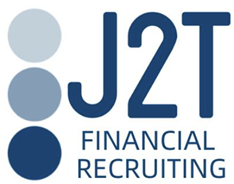As companies begin to craft their goals for 2024, growth is top of mind for many. Earlier this month, Forbes came out with an article on the workforce outlook emphasizing growth for the upcoming year. The article shared, "With increased cash flow comes the ability for businesses to tap into the healthier job market" and that there is still a "need to future-proof your business by hiring employees who can drive efficiency and propel growth." The role of a capable and dedicated team cannot be overstated, and developing a robust team is essential for any organization seeking growth. This concept applies across industries but is specifically present in accounting and finance.
5 best practices for developing a team that supports a growing organization.
Strategic Hiring and Onboarding
Define Clear Roles and Responsibilities: Forbes states that the first step in getting the right people into an organization is often the most neglected: writing the job description.
Knowing what your company needs regarding roles and responsibilities is a crucial first step toward growth. Precision and detail-oriented work in accounting and finance are paramount, and companies often seek candidates with specific knowledge, skills, and abilities. However, what a company needs is in constant flux. Month-end closing, busy season, and other factors determine what a company needs and when. Hiring junior talent to support growth is a route many companies take to support the team's headcount and financially support the organization.
When hiring junior talent, it is especially crucial to establish clear roles and responsibilities. Consider what tasks the new team members willbe responsible for, such as financial analysis, audit, or tax preparation. This not only helps potential candidates understand the job but also ensure sufficient task allocation.
Effective Communication
Regular Team Meetings: Communication is integral to organizational success; however, just this year, 86% of employees and executives believe that the lack of effective collaboration and communication is the leading cause of workplace failures. On the other hand, teams who communicate effectively may increase their productivity by 25%.Regular team meetings are an opportunity to enhance communication in the workplace, which identifies what teams are missing and what could be improved in the workplace and provides an avenue for work-specific conversations such as business strategy, performance metrics, and goals. Communication is specifically important when an organization is experiencing change, such as when new team members are added and when growth is prioritized.
Encourage Feedback:
Create an environment where all levels of employees feel comfortable providing honest feedback. Encourage them to share their insights and ideas to strengthen communication and lead to innovative solutions. Not only is it a benefit to employees to feel heard and appreciated, but as many as90% of workers say they are more likely to stay at a company that acts on feedback, and 71% of employees view critical feedback as helpful and motivating, according to Achievers.
High turnover is a huge cost to companies, and when focused on growth, every penny matters. Research by SHRM shows that replacement costs can be as high as 50%-60%, with overall costs ranging anywhere from 90%-200% for a single employee. For an employee earning $60,000 annually, the replacement costs could be up to $45,000, with an overall cost of up to $120,000 to the company. Finding out what matters most to your employees and acting is a great way to prioritize successful growth and keep your team members at the company.
Transparent Leadership:
Transparent leadership is particularly important in the accounting and finance sectors, where ethical standards and accountability are critical. The leadership team should be transparent in decision-making, fostering trust, and developing a culture of responsibility among new employees, especially junior talent fresh into the workforce.
Simple ways to embrace transparent leadership include
- Weaving transparency into workplace culture: This is the idea that sharing appropriate information with the team benefits both the company and its people. It involves everyone in the organization and takes a group effort to maintain.
- Leading with accountability: Do what you say you will do. This sets an example for your team and helps build trust.
- Relating and empathizing: Employees want to feel that you can relate to them and that you care about their professional and personal lives. Sharing your experiences helps employees become more comfortable communicating their needs at work, even if they are difficult topics.
Encourage Autonomy:
Autonomy is essential to overall employee satisfaction. However, it can be hard to relinquish control and responsibilities to embrace autonomy. We do not suggest that employees are100% autonomous, as that would destroy the team dynamic, but allowing them to have decision-making power leads to greater success and higher job satisfaction. This is also important for temporary hires and junior talent. Autonomy encourages them to take ownership of their work and fosters creative problem-solving in financial matters.
Developing a high-performing team is a continuous journey, especially when hiring junior talent. By following these five best practices, you can create a strong team that supports your organization's financial growth and drives innovation, compliance, and success in the complex world of accounting and finance. Remember that investing in your team is an investment in the future growth of your organization.

